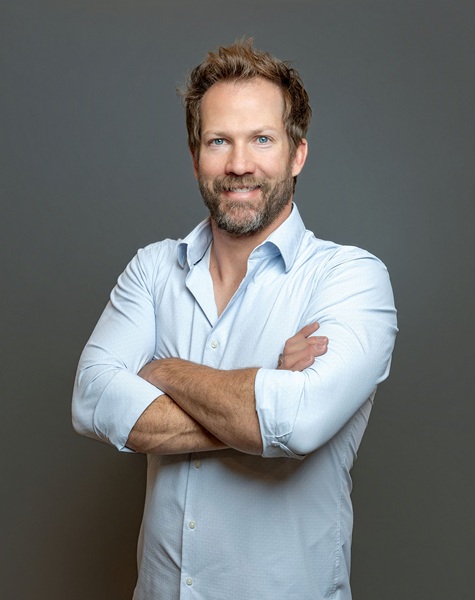Broken Home: The Availability and Affordability Crisis in the Homeowners Market

By: Will Jones
It is no exaggeration to say the U.S. homeowners market is in crisis. While the hard market has cut deep into nearly every insurance market, the scale and magnitude of its impact on the bread and butter of the personal lines market has turned what was once a simple product that could be sold with ease into a nightmare.
It’s a problem that lays bare the insurance industry and regulators’ challenges in dealing with climate risk. It’s exposing the frailty of the insurance ratemaking and regulatory process. It’s forcing insurers of last resort to accept far more risk than they can afford. And it’s pushing insurers’ obligation to provide a product that is a cornerstone of the economy while also obtaining a reasonable profit to the limit.
For independent agents and brokers, it’s a problem that is affecting decades-old client relationships. As some companies reduce commissions and capacity, it’s affecting their bottom line. And it is forcing agents to work harder for less and become the bearers of bad news on a daily basis as they explain to unhappy customers why their homeowners insurance is often either vastly more expensive, unaffordable or unavailable.
In many states, rates are—and have been for some time—inadequate to absorb the frequency and severity of losses. And for the first time ever, some Americans are finding that their homes are completely uninsurable.
The homeowners market is buckling under pressure from domestic and international economic and social issues, ranging from economic inflation to supply-chain issues, reinsurance challenges, climate risk, legal system abuse and more.
Ironically, one of the first places to look when trying to understand the national homeowners market crisis is the coverage that goes hand-in-hand with it: personal auto. Personal auto is suffering from similar hard market woes, impacting insurers’ overall performance and appetite for other business.
In 2022, the rising cost of health care and auto repairs, spiraling litigation and increasing distracted driving combined to deliver personal lines insurers their worst auto underwriting results in over two decades, according to a S&P Global Market Intelligence analysis, which reported that the sector’s net combined ratio was 111.8%, 11 points higher than 2021.
In homeowners insurance specifically, however, rapid inflation in building costs and a decade of severe weather have resulted in the homeowners market recording a combined ratio above 100 for the last three years, according to Fitch Ratings.
An aggregation of results for insurance subsidiaries that write at least 70% of their direct premiums within personal lines showed a net combined ratio of 114.9% in the second quarter of 2023 compared to 112.4% in the prior year period, according to S&P.
“Undoubtedly, the market is hard; it’s hardening and it’s going to get worse for homes exposed to California brush fire and Florida wind,” says Richard Kerr, founder and CEO of MarketScout, and CEO of Novatae Risk Group. “The market problems are amplified because insurers have not been able to increase stated values to keep up with the increase in construction costs.”
Startlingly, losses from severe thunderstorms have steadily increased by 7% annually in the last 30 years. 2023 marked an increase of almost 90% compared to the previous 5-year average —$32 billion—and more than double the previous 10-year average—$27 billion, according to Swiss Re. And that’s before hurricane damage is accounted for, which is categorized differently.
Severe thunderstorms are defined by the National Oceanic and Atmospheric Administration (NOAA) as containing hail 1 inch or greater or winds gusting in excess of 57.5 mph, while a Category 1 hurricane contains sustained winds of at least 74 mph. Both drench communities and cause flooding.
Since 1980, weather and climate disasters have cost approximately $2.6 trillion, according to NOAA, with 60 catastrophes exceeding $1 billion in losses in the last three years. In total, 28 weather and climate disasters with losses exceeding $1 billion each affected the U.S. in 2023. The combined total cost of these disasters was $92.9 billion. Only 2017 had more billion-dollar disasters in the first six months, and 2023 was second only to 2021 for total damage costs through the first half of any year since 1980.
Meanwhile, according to Associated Builders and Contractors, construction input prices have increased by 37.7% between 2020 and 2023. And while the cost of some materials has begun to deflate, such as lumber, the cost of construction machinery increased 12% from 2022 to 2023.
Miserable combined ratios illustrate that rates have not kept up with the growing cost of losses. This has led personal lines insurers to flee markets where they are not permitted to raise premiums adequately in the current environment, even though nationally, homeowners insurance premiums jumped an average of 21% from May 2022 to May 2023, according to Policygenius, which provided only partial relief to insurers.
As a result, independent agents and brokers are faced not only with a shortage of a product to sell but a supplier that is often seeking to trim expenses, including commissions.
California Waiting
The homeowners crisis in California is unprecedented. Two factors led to the current situation: the regulatory framework that created it—Proposition 103—and the magnitude of wildfire risk caused by numerous factors, including extreme drought, forest mismanagement, deferred utility maintenance and negligence, expanded migration, and building in the wildland-urban interface, which is far more severe than other West Coast states.
Prior to 2017, the largest fire ever to occur in California was the Oakland Hills fire in 1991. This consistent risk profile led to abundant capacity and strong competition. But in 2017, the state experienced a series of catastrophic fires that created losses that exceeded $10 billion per fire, giving insurers an almighty shock and exposing the insurance rate review process determined by Prop 103.
“Unlike in most other states, insurers in California are not allowed to price catastrophe risk prospectively. Instead of letting insurers use the most current data and advanced modeling technologies to inform their pricing … [Prop 103] requires them to price coverage based on historical data alone,” according to the Insurance Information Institute (Triple-I). Essentially, when calculating wildfire risk, Prop 103 means insurers must use a 20-year loss experience rather than price coverage on a shorter, more accurate period.
“What makes California an outlier is the magnitude of the exposure and a regulatory system designed to be much more restrictive and less adaptive to dramatic marketplace changes,” says Jill Epstein, CEO of the Independent Insurance Agents & Brokers of California (IIABCal).
Prop 103, which was passed in 1988, made California a prior approval state—a time-consuming and reactive process where rates must be filed with regulators, who must then individually approve or disapprove the filing before it can go into effect. However, California’s rate process is unable to create accurate rates by prior approval regulations promulgated by the California Department of Insurance that overstate revenues and understate expenses or ignore them altogether, such as reinsurance cost. Furthermore, Prop 103 made the insurance commissioner an elected position and created a process for paid, public intervenors modeled on public utility regulation.
Despite the California homeowners insurance market recording an average loss ratio of 108.1% in the last 10 years, largely a consequence of significant wildfire losses in 2017 and 2018, Californians still pay below the national average for homeowners. And last year, the situation came to a head.
Unable to raise rates or accurately underwrite risks, carriers fled. State Farm, the state’s largest homeowners insurance provider, and Allstate, the state’s fourth largest homeowners insurance provider, announced they would no longer write new policies in California. Farmers Insurance and many others placed a cap on new policies.
After years of inaction, in September 2023, California Gov. Gavin Newsom signed an executive order urging Ricardo Lara, commissioner of the California Department of Insurance, to take swift action to address issues in the insurance system. Consequently, Lara issued the “Sustainable Insurance Strategy,” which included conceptual support for measures aimed at fixing the crisis. No specifics have been released as yet, but the commissioner expressed support for a new approach to catastrophe risk modeling, introducing California-only net reinsurance costs into rates, and, most notably, a groundbreaking strategy for insurance companies to commit to writing at least 85% of their statewide market share in wildfire-distressed underserved areas.
Many of the measures included in the plan were championed by IIABCal. The association raised over $150,000 to hire nationally prominent outside lawyers and actuaries to develop solutions to the property insurance crisis. It also spearheaded a coalition consisting of the California Apartment Association, the California Association of Realtors, the California Building Industry Association, the California Mortgage Bankers Association, the California Farm Bureau, and others to speak to legislators and regulators about the resonance the crisis is having across the state’s economy.
When Lara’s plan was released, “that felt like the turning point,” Epstein says. “In September, the Commissioner said the timeline was immediate and urgent, and had the aim of completing all necessary changes by December 2024. Unfortunately, as of the end of January, no emergency regulations to detail the plan have been released.” In fact, many of the strategies are unlikely to be fully felt by consumers until Lara’s term expires in January 2027. “Will Californians see increased costs in the future? The only realistic answer is yes,” Lara said in December 2023.
Florida Fiasco
In Florida, where homeowners pay the highest premiums in the country, the homeowners insurance market crisis has been steadily worsening. Insurance premiums in Florida have tripled over the past five years, according to the Triple-I. Floridians now face an average yearly payment exceeding $6,000, more than triple the national average of $1,700.
Rising premiums are creating an affordability issue. Meanwhile, carriers are exiting the state, a combination that is forcing the number of homes insured by the state-backed insurer of last resort to swell. At the end of 2023, around 1.3 million homes were insured by Citizens Property Insurance Corp., more than triple the 420,000 in October 2019. This creates an incredibly dangerous situation where the so-called last resort might not last through another disaster.
“It could take just one major hurricane to render Citizens insolvent,” said U.S. Senate Budget Committee Chair Sen. Sheldon Whitehouse (D-RI). Whitehouse issued the statement upon launching an investigation of whether Citizens has enough money in the bank to withstand future disasters. Given that Florida was walloped in both 2022 and 2023 by hurricanes that together cost more than $100 billion in damages, the answer is most likely an emphatic “no.”
Among other underlying issues in the state’s crumbling insurance system is a series of legal and regulatory mistakes that have created a man-made disaster. The main culprits are a Florida law that requires homeowners to replace roofs that have sustained 25% or more in damage; an assignment of benefits (AOB) provision that allows a homeowner to sign their policy benefits over to a roofing company so the roofers can approach an insurance carrier about the cost and reimbursement of roofing repairs; and the “attorney fee multiplier” that means an attorney can collect as much as 250% of a typical attorney fee, a law that was originally designed to encourage attorneys to accept homeowners cases but has been widely abused.
In the wake of frequent hurricanes, excessive use and abuse of the AOB provision and claims litigation have multiplied losses. Florida is the site of 79% of all homeowners insurance lawsuits over claims filed nationwide, while Florida’s insurers receive only 9% of all U.S. homeowners insurance claims, according to the Florida governor’s office. Further, 71% of claims costs paid by insurers in recent years went to attorneys, and only 8% went to consumers, according to “Florida’s P&C Insurance Market: Spiraling Towards Collapse” by Guy Fraker of Cre8tfutures Innovation System & Consultancy.
In the past few years, the Florida legislature has passed a handful of laws aimed at curbing these effects on the marketplace and enhancing availability, including funding for reinsurance, regulation surrounding roof replacement and deductibles, and new standards for attorney fees. However, for the time being, many homeowners are faced with a choice between paying their bills and paying their homeowners insurance.
Additionally, the Census Bureau estimates that a net total of about 320,000 Americans moved to Florida between 2021 and 2022, the largest migration of Americans to any state. At the same time, the ratings agency Demotech issued a ratings downgrade to more than a dozen insurance companies operating in Florida in a sweepingly bleak assessment of the state’s insurance market.
“Over the last few years, FAIA members have dealt with the worst homeowners insurance market most can ever remember. With fewer options, reduced carrier capacity, and major hurricanes, agents have been working harder to service their customers than ever before,” says Kyle Ulrich, president and CEO of Florida Association of Insurance Agents (FAIA). “However, the transformational reforms passed by the Florida Legislature in 2022 and 2023 have begun to breathe life into the beleaguered market. For the first time in years, there appears to be light at the end of the tunnel.”
However, alongside several other companies, Farmers has ceased offering homeowners policies in Florida while many others are reducing exposure, resulting in waves of nonrenewals over the last two years. In 2022, six insurers were declared insolvent and more followed in 2023—most notably United Property & Casualty, which wrote about 135,000 policies in the state.
When Hurricane Ian made landfall as a Category 4 hurricane in September 2022, all these issues were exacerbated, “creating a snowball effect,” says Terri Ramey, owner of Ramey Insurance Agency in Venice, Florida, who noticed a massive uptick in nonrenewals after Ian. “Nonrenewals are increasing and still going strong,” Ramey says. “We’re getting nonrenewals into 2024 and I don’t anticipate those stopping anytime soon.”
The market is putting personal lines agencies under a significant stress due to a huge number of price-conscious clients who want their policy remarketed on a deadline, creating a “whirlwind of volume,” Ramey says. “This is our new normal.”
But with more than 20 years in the business, Ramey remains positive that the hard market cycle will eventually soften, sharing some seldom-seen sympathy for her carrier partners. “The first thing you want to do is get mad about it, but what you have to realize is they don’t want to do this any more than you do. They’re doing it to survive,” she says. “I share that with my staff so that we can then explain it to our customers.”
“The best thing to do about all of this is to educate customers,” Ramey says. “If you cannot articulate that to your customers, then you’re not doing your job.”
Agencies Adapt
Across the country, distress in the personal lines market has forced independent agencies to change the way they operate—from how they approach renewals to their growth strategy, client communications, job roles and carrier relationships.
According to a recent survey of independent agents conducted by Trusted Choice®, one-third of agencies with less than 50 employees have shifted their focus to retention rather than attempting to attract new clients. And when deciding where to focus their attention, 38% have prioritized client remarketing by the largest premium impact to the client, the survey found.
The hard market in personal lines has also resulted in independent agencies losing clients. A quarter of agents have lost an account due to nonrenewal, lack of an admitted or non-admitted market, or new coverage restrictions imposed by the carrier, according to the Trusted Choice survey.
“In 30 years in the industry, this has been the most challenging period of my career,” says Tod O’Dowd, principal of Avery Insurance in Wolfeboro, New Hampshire, who emphasizes the importance of communication and empathy in dealing with frustrated clients facing increased costs.
The current market calls for proactive customer service where customers can be retained by showcasing the market options, providing clients with an explanation of the market conditions and advising against hasty switches that could be detrimental to their immediate and medium-term insurance options.
“We are focusing on being proactive instead of reactive and that goes a long way with retention,” says Lauren Gordon, director of personal lines, at Avery Insurance. “We’re showing our clients a picture of the marketplace by going to our carrier partners and showing them rate comparisons. Oftentimes, it reiterates that we can’t improve their position and that they’re best served by staying where they are.”
Proactive renewal conversations primarily revolve around clients seeking ways to reduce premiums through coverage adjustments. As premiums increase, 46% of Americans have considered or have already taken a higher deductible to save money on insurance, while 22% have considered going uninsured to save money, according to a consumer survey conducted by Trusted Choice.
However, even with the consultative approach of an independent agent, the market is often unable to provide options for cost reduction and is leaving loyal clients stranded without a solution. For example, the homeowners market crisis has left Avery Insurance without an option to offer a series of protection class 9 and 10 properties, despite O’Dowd demonstrating to insurers that the loss ratio on these properties is less than 7%.
Even clients who are willing to pay the highest premium are not guaranteed coverage, and self-insurance for clients without a mortgage is more of an imposition than a choice.
“There aren’t a whole lot of solutions and that’s my frustration,” O’Dowd explains. “Our industry has failed to find a middle ground for clients that can afford a solution. We need a new product that would allow some sort of cost sharing, coinsurance agreement to allow money and premium from strong clients to remain in the marketplace but not have the client or the insurer retain 100% of the risk.”
“The system in a lot of states is broken, and it’s not looking like there’s going to be a solution,” he adds.
Technology Knocks
“Two years ago, I had forecasted for the hardening cycle, but I never forecast for a choking cycle,” says Tiago Prado, co-founder and chief visionary officer of BRZ Insurance in Framingham, Massachusetts. “Insurance companies choked agents last year. Imagine being an independent agent and your core supplier shuts down supply. It’s like you are in the candy business and there’s no sugar.”
Last year, the hard market created a 30% churn in clients at BRZ. There were three main causes: premium increases, lack of markets and claim history. As agencies reacted to changes in carrier guidelines and shifting appetites, often on a monthly and sometimes weekly basis, BRZ has leveraged data analytics and artificial intelligence (AI) to smooth their operations amid the market’s flux, highlighting the importance of agents adopting technological advancements and taking control of their own tech solutions.
“We’re a data-orientated firm, and what we’ve done is leverage data analytics with changing carrier appetites to source the type of business that we’re successful in,” Prado says. “That’s the only way we’ve managed to remain competitive.”
The squeeze on commissions, less new business and increasing operating costs are forcing agencies “to look at ways that they can increase their productivity and maximize every single person on their staff to be able to accomplish more,” says Brenna Johnson, vice president of product management, EZLynx.
Yet, only a third of agencies have added technology or increased automation when changing their marketing strategy to handle the extra work when remarketing clients, whereas 41% and 64% have changed staff responsibilities and increased client communication, respectively, according to Trusted Choice. Similarly, to handle the increase in customer inquiries from clients during the hard market, 35% have changed staff roles while only 18% have added technology.
However, while adopting new technology isn’t every agency’s go-to solution, the main challenge with technology has shifted in recent years. Deciding which tool to adopt is no longer the top challenge. Instead, getting the most out of the tools they already have is the biggest problem for half of smaller agencies and three-quarters of larger agencies, according to the Catalyit study “The State of Tech in Independent Insurance Agencies.”
“Agencies aren’t using technology as effectively as they could be,” Johnson says. “In the hard market, independent agents are so busy that they often miss updates that have come out from their core systems that can help productivity and free up staff to focus on being trusted advisers.”
“It requires an upfront investment, and it’s really easy not to prioritize that right now,” she says. “My recommendation would be to pick a system and try things out. Try looking at the capabilities that truly come out of the box on a lot of systems, and see how they can be used in your organization.”
End of the Road
In 2020 and 2021, Louisiana was hit by four hurricanes—Delta, Zeta, Laura and Ida. The latter two were the two strongest hurricanes in the history of the state. These storms resulted in about $25 billion in paid losses.
“The entire system is overwhelmed and, as a result, the homeowners market is about $13 billion in the red,” said Jeff Albright, chief executive officer of the Independent Insurance Agents & Brokers of Louisiana (IIABL) during “Uninsurable Planet,” a BBC Radio 4 broadcast from December 2023. “After those four storms, there were 12 insurance companies that went insolvent.”
Like many other states, insurers in Louisiana are either recouping their losses by increasing rates or deciding to cut and run.
Homeowners insurance increases are steep, hitting Americans in their pockets. Insurance for some $350,000 residential properties in Louisiana has risen $4,500 in one year, far surpassing the average mortgage payment, according to the BBC Radio 4 broadcast, forcing Americans to work harder, save more and spend less, all because of insurance.
As debate rages about climate risk, a simple fact remains: “It doesn’t matter what your politics on climate change are, it doesn’t even matter if you believe in climate change—insurance companies believe in climate change and they are going to be charging more for insurance,” Albright said. “We are all going to pay more for climate change no matter what your politics on that issue might be.”
Climate risk and the cost of insurance are having a ripple effect on the economy, with residents who are unable to afford their premium and are tired of suffering from storm after storm are leaving the state. “We’re also seeing a lot of people go uninsured,” Albright said. “One concern we’ve had is that when we have some more really big hurricanes, there are going to be a lot of people whose homes are destroyed, but they don’t have the insurance to rebuild.”
Will there come a point where some parts of Louisiana and the wider U.S. are uninsurable? “In some significant ways, I think we’re already there,” Albright added.
Will Jones is IA editor-in-chief.
Client CooperationWhile telematics and the Internet of Things (IoT) have given drivers more flexibility about how much they pay for auto insurance, as well as help insurers identify and reward safer drivers, the same cannot be said about homeowners insurance. While convincing drivers to install a device in their vehicle that tracked their every movement was initially a daunting proposition, rising premiums have driven adoption. For homeowners, the complexity of properties and the diversity of how and where IoT products could be installed remain a barrier. Now, spiraling premiums may be the shove the market needs to encourage greater consumer involvement in adopting loss control measures. “I don’t see this cycle going back to what it used to be—we have now entered a new norm,” says James Hickey, executive vice president, head of personal lines, World Insurance Associates. “Homeowners is not going to cost hundreds of dollars anymore, it’s going to be thousands. And homeowners are going be asked to participate in a lot more loss mitigation.” Home IoT options range from the achievable—smart security systems, water leak detectors, smoke and carbon monoxide detectors and temperature sensors—to the futuristic, such as usage-based modeling and predictive analytics. “Homeowners are going to be asked to participate in loss control and the IoT devices are going to be added to the homeowners policy in order to get coverage,” Hickey says. “It’s not mandatory today, but it wouldn’t surprise me if it’s mandatory in the future.” —WJ |











